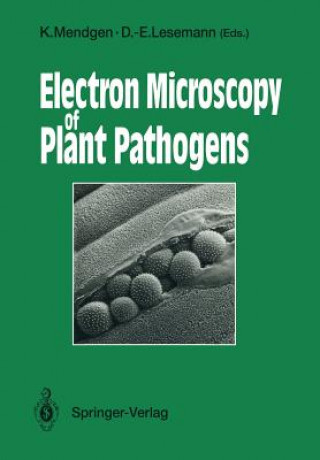
Livraison
Guide d'achat
16 124 818 livres à l’intérieur 175 langues






Afficher toutes les langues (175)
2 047 051 livres numériques à l’intérieur 101 langues






Afficher toutes les langues (101)





Cela ne vous convient pas ? Aucun souci à se faire ! Vous pouvez renvoyer le produit dans les 30 jours
 Bon d’achat
n'importe quelle valeur
Bon d’achat
n'importe quelle valeur
Impossible de faire fausse route avec un bon d’achat. Le destinataire du cadeau peut choisir ce qu'il veut parmi notre sélection.
Electron Microscopy of Plant Pathogens
 Anglais
Anglais
 317 b
317 b
 common.delivery_to
common.delivery_to
Politique de retour sous 30 jours
Ceci pourrait également vous intéresser


Plants, fungi, and viruses were among the first biological objects studied with an electron microscope. One of the two first instruments built by Siemens was used by Helmut Ruska, a brother of Ernst Ruska, the pioneer in constructing electron microscopes. H. Ruska published numerous papers on different biological objects in 1939. In one of these, the pictures by G. A. Kausche, E. Pfankuch, and H. Ruska of tobacco mosaic virus opened a new age in microscopy. The main problem was then as it still is today, to obtain an appropriate preparation of the specimen for observation in the electron microscope. Beam damage and specimen thickness were the first obstacles to be met. L. Marton in Brussels not only built his own instrument, but also made considerable progress in specimen preparation by introducing the impregnation of samples with heavy metals to obtain useful contrast. His pictures of the bird nest orchid root impregnated with osmium were revolutionary when published in 1934. It is not the place here to recall the different techniques which were developed in the subsequent years to attain the modern knowledge on the fine structure of plant cells and of different plant pathogens. The tremendous progress obtained with tobacco mosaic virus is reflected in the chapter by M. Wurtz on the fine structure of viruses in this Volume. New cytochemical and immunological techniques considerably surpass the morphological information obtained from the pathogens, especially at the host-parasite interface.
À propos du livre
 Anglais
Anglais


 Contact
Contact Comment faire ses achats
Comment faire ses achats



















